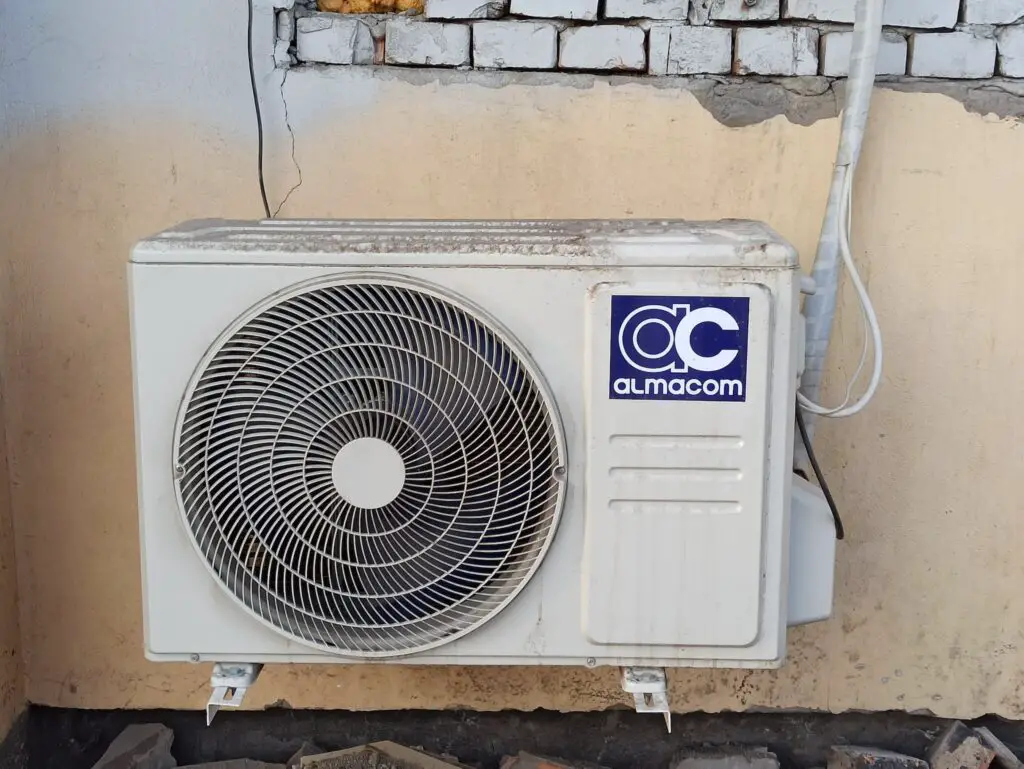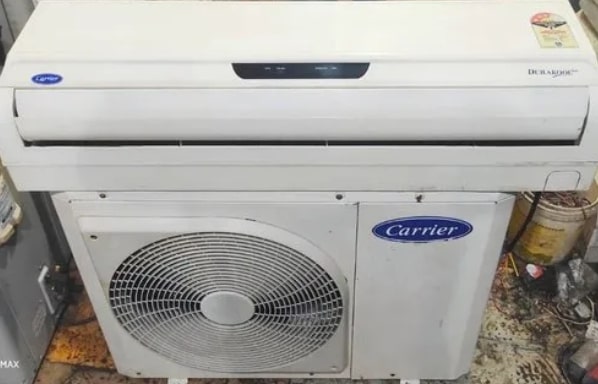As an Amazon Associate, we earn from qualifying purchases. This does not affect the price you pay or the quality of the products you buy. For more information, please read the full affiliate disclosure here.
If you live in an area where power outages are frequent or you want to enjoy the comfort of cooling during camping trips, you might be thinking of buying a generator to power your air conditioner (AC). But how do you know what size generator you need for your AC?
Choosing the right generator size for your AC is not as simple as matching the numbers on the labels. You need to understand some basic concepts and calculations, such as:
- What are kilovolt-amps (KVA) and horsepower (HP), and how are they related?
- How do you calculate the required generator size for your AC using a simple formula?
- What are some other factors that affect the generator performance, and how do you apply a safety margin or derating factor to your generator size?
- What are some tips and recommendations for choosing the best generator for your AC according to your needs and budget?
In this blog post, we will answer all these questions and help you choose the right generator size for your AC. We will also provide some examples and illustrations to make it easier for you to understand.
By the end of this blog post, you will be able to:
- Understand what KVA and HP are and how they are related.
- Calculate the required generator size for your AC using a simple formula:
- Consider some other factors that affect the generator performance and apply a safety margin or derating factor to your generator size.
- Choose the best generator for your AC according to your needs and budget.
So, let’s get started!
What are KVA and HP, and how are they related?
Before we dive into the calculations, let’s first understand what KVA and HP are and how they are related.
KVA: The Apparent Power
KVA is a unit of apparent power, which is the amount of power that an electrical device draws from a power source. Apparent power is measured in volt-amps (VA), which is the product of the voltage (V) and the current (A) in an electrical circuit. Kilo means thousand, so KVA is simply VA divided by 1000.
For example, if an electrical device draws 10 amps of current at 120 volts, then its apparent power is:
Apparent Power (VA) = Voltage (V) × Current (A)
Apparent Power (VA) = 120 × 10
Apparent Power (VA) = 1200
Apparent Power (KVA) = Apparent Power (VA) / 1000
Apparent Power (KVA) = 1200 / 1000
Apparent Power (KVA) = 1.2
HP: The Real Power
HP is a unit of real power, which is the amount of power that an electrical device actually uses to perform work. Real power is measured in watts (W), which is the product of the voltage (V) and the power factor (PF) in an electrical circuit. The power factor is a dimensionless number between 0 and 1 that indicates how efficiently an electrical device converts apparent power into real power. The higher the power factor, the more efficient the device.
For example, if an electrical device has a power factor of 0.8 and draws 1.2 KVA of apparent power, then its real power is:
Real Power (W) = Voltage (V) × Power Factor (PF)
Real Power (W) = 120 × 0.8
Real Power (W) = 96
Real Power (HP) = Real Power (W) / 745.7
Real Power (HP) = 96 / 745.7
Real Power (HP) = 0.13
The Relationship Between KVA and HP
KVA and HP are related by the following formula:
Real Power (HP) = Apparent Power (KVA) × Efficiency (η) × Power Factor (PF)
where:
- Real power (HP) is the real power in horsepower.
- Apparent Power (KVA) is the apparent power in kilovolt-amps;
- Efficiency (η) is the efficiency of the device, which is a dimensionless number between 0 and 1 that indicates how much of the input power is converted into output power; and
- The power factor (PF) is the power factor of the device.
Using this formula, we can convert between KVA and HP or vice versa, as long as we know the efficiency and power factor of the device.
For example, if we want to know how many KVA of apparent power can produce 1.5 HP of real power, assuming an efficiency of 0.8 and a power factor of 0.9, we can rearrange the formula as follows:
Apparent Power (KVA) = Real Power (HP) / Efficiency (η) × Power Factor (PF)
Apparent Power (KVA) = 1.5 / 0.8 × 0.9
Apparent Power (KVA) = 1.68
Therefore, we need a generator that can provide at least 1.68 KVA of apparent power to produce 1.5 HP of real power.
ALSO READ:- FAQs: What Will A 2000 Watt Generator Run?
How Do You Calculate the Required Generator Size for Your AC?

Now that we know what KVA and HP are and how they are related, we can use them to calculate the required generator size for our AC.
To calculate the required generator size for your AC, you need to know the following information:
- The real power of your AC in horsepower (P(HP));
- The efficiency of your AC (η); and
- The power factor of your AC (PF)
You can find these values on the nameplate or manual of your AC, or you can estimate them using some typical values. For example, a typical window AC unit has a real power of 1.5 HP, an efficiency of 0.8, and a power factor of 0.9.
Using these values, we can plug them into the formula above and solve for the apparent power in KVA:
Apparent Power (KVA) = Real Power (HP) / Efficiency (η) × Power Factor (PF)
Apparent Power (KVA) = 1.5 / 0.8 × 0.9
Apparent Power (KVA) = 1.68
Therefore, we need a generator that can provide at least 1.68 KVA of apparent power to run our AC.
However, this is not the final answer because we also need to consider some other factors that affect the generator’s performance, such as:
- The starting current of your AC, which is usually higher than the running current and may cause a voltage drop or overload on the generator,
- The fuel type and quality, which may affect the generator efficiency and emissions; and
- The other electrical loads that you want to run on the same generator, such as lights, fans, refrigerators, etc.
To account for these factors, you need to apply a safety margin or derating factor to your generator size. A common rule of thumb is to multiply your calculated KVA by 1.5 to get the minimum generator size in KVA. For example:
Minimum Generator Size (KVA) = Apparent Power (KVA) × 1.5
Minimum Generator Size (KVA) = 1.68 × 1.5
Minimum Generator Size (KVA) = 2.52
Therefore, you need a generator that can provide at least 2.52 KVA of apparent power to run your 1.5 HP AC safely and reliably.
How to Choose the Best Generator for Your AC

Now that you know how to calculate the minimum generator size for your AC, you can start looking for the best generator for your AC according to your needs and budget.
Here are some tips and recommendations for choosing the best generator for your AC:
- Choose a generator that has a rated output capacity equal to or greater than your minimum generator size in KVA. For example, if your minimum generator size is 2.52 KVA, you can choose a generator that has a rated output capacity of 3.0 KVA, 4.5 KVA, or more.
- Choose a generator that has a surge or peak output capacity equal to or greater than the starting current of your AC. The starting current of your AC is usually three to five times higher than the running current and may last for a few seconds when you turn it on. You can find the starting current of your AC on the nameplate or manual of your AC, or you can estimate it using some typical values. For example, if your AC has a running current of 10 amps at 120 volts, then its starting current is:
Starting Current (A) = Running Current (A) × Starting Factor
Starting Current (A) = 10 × 4
Starting Current (A) = 40
Therefore, you need a generator that can provide at least 40 amps of surge or peak output capacity to start your AC.
- Choose a generator that has a fuel type and quality that suits your preferences and availability. There are different types of generators available on the market, such as gasoline generators, diesel generators, propane generators, natural gas generators, etc. Each type has its own advantages and disadvantages in terms of cost, efficiency, emissions, maintenance, noise level, etc. You should choose a generator that has a fuel type and quality that you can easily access and afford.
- Choose a generator that has an automatic voltage regulator (AVR) or an inverter technology to ensure stable and clean power output for your AC and other sensitive electronics. An AVR or an inverter can adjust the voltage and frequency of the power output according to the load demand and protect your AC and other sensitive electronics from voltage fluctuations and surges.
- Choose a generator that has a noise level that is acceptable for your environment and comfort. Generators can be noisy and may disturb you and your neighbors, especially at night. You should choose a generator that has a noise level that is within the acceptable range for your area and situation. You can find the noise level of a generator on the label or manual of the generator, or you can measure it using a sound meter. A typical noise level for a generator is around 70 decibels (dB), which is equivalent to the sound of a vacuum cleaner.
- Choose a generator that has a warranty and after-sales service that meets your expectations and needs. Generators are expensive and complex machines that may require regular maintenance and repairs. You should choose a generator that has a warranty and after-sales service that covers the parts, labor, and transportation costs for any defects or malfunctions. You should also check the availability and accessibility of the authorized service centers and technicians in your area.
ALSO READ:- How to Pick the Best Generator for Your Business and Home
Bottom Line
If you want to power your 1.5 HP AC with a generator, you need to know the KVA and HP ratings of your AC, as well as the efficiency and power factor.
You can use the formula above to calculate the required generator size in KVA, and then apply a safety margin of 1.5 to get the minimum generator size in KVA.
For example, if your AC has a real power of 1.5 HP, an efficiency of 0.8, and a power factor of 0.9, you need a generator that can provide at least 2.5 KVA of apparent power or more depending on your budget.
However, you also need to consider other factors that affect the generator’s performance, such as the starting current, the ambient temperature, the fuel quality, and other electrical loads. Therefore, it is advisable to consult a professional electrician before buying a generator for your AC.
We hope this blog post has helped you choose the right generator size for your AC. If you have any questions or comments, please feel free to leave them below. We would love to hear from you.
🔌 Generator Tools & Social Hub
Maximize your generator knowledge! Use our calculators and join our community for expert tips:
Stay connected for updates and exclusive content:
📘 Facebook Page 🐦 X (Twitter) 📌 Pinterest 🔒 Private Facebook GroupDiscover more from Generator Hacks
Subscribe to get the latest posts sent to your email.


